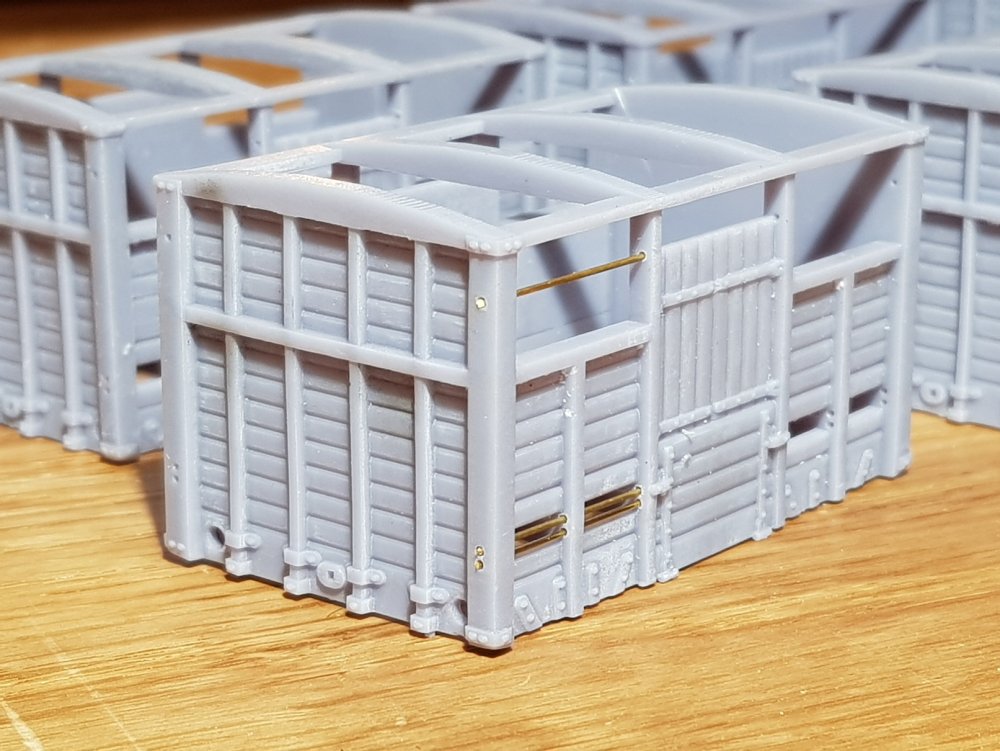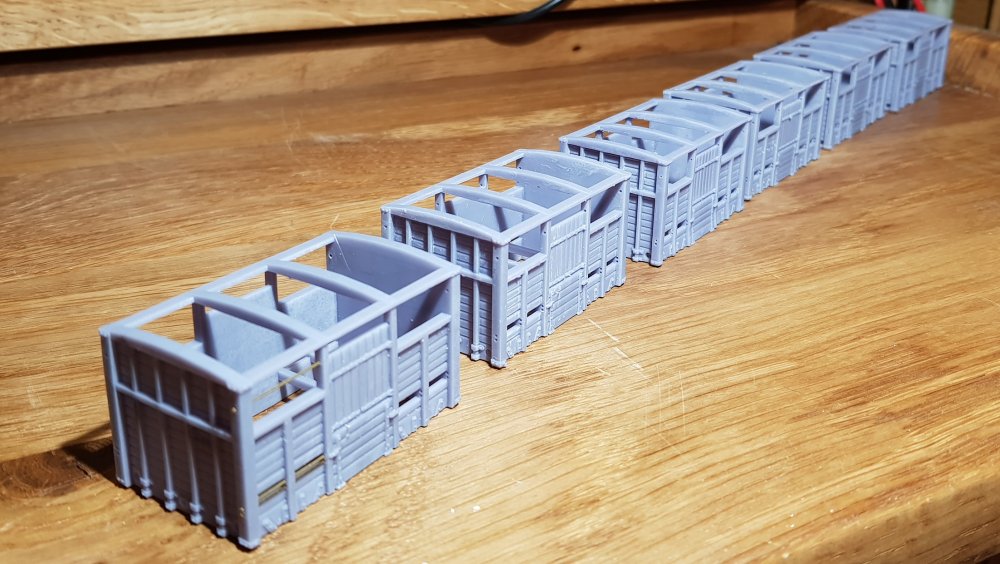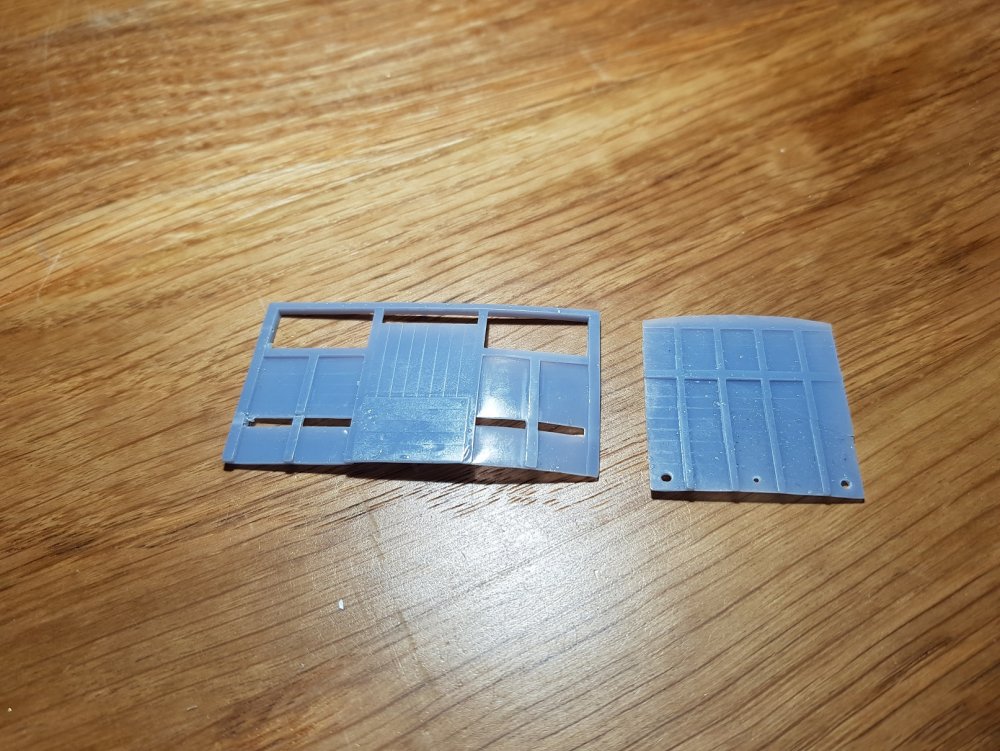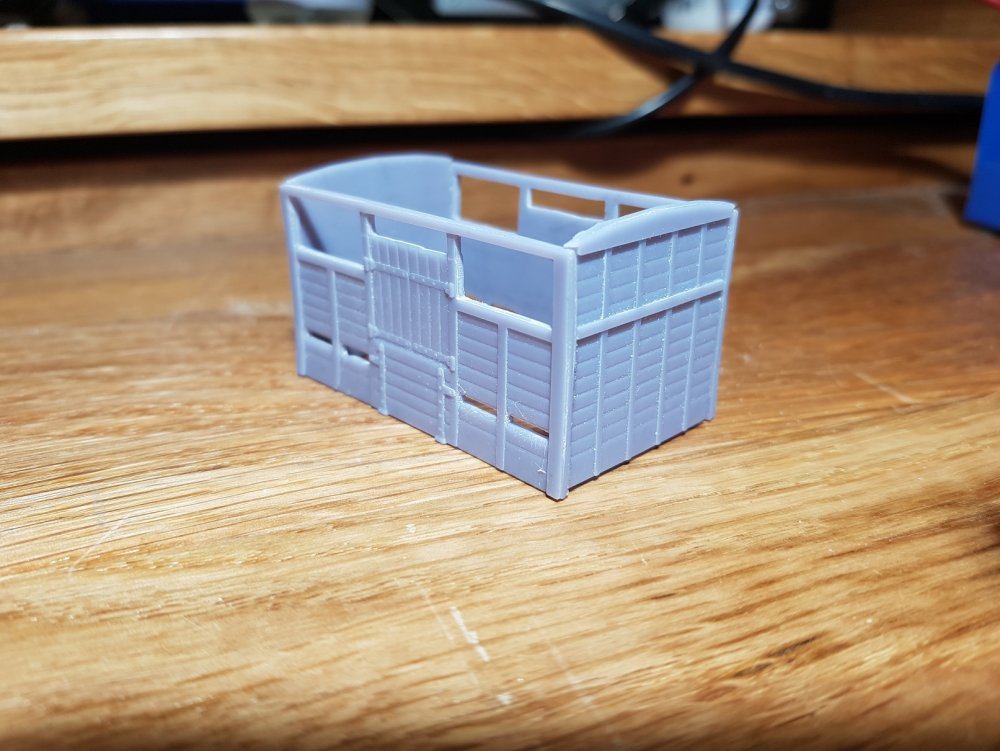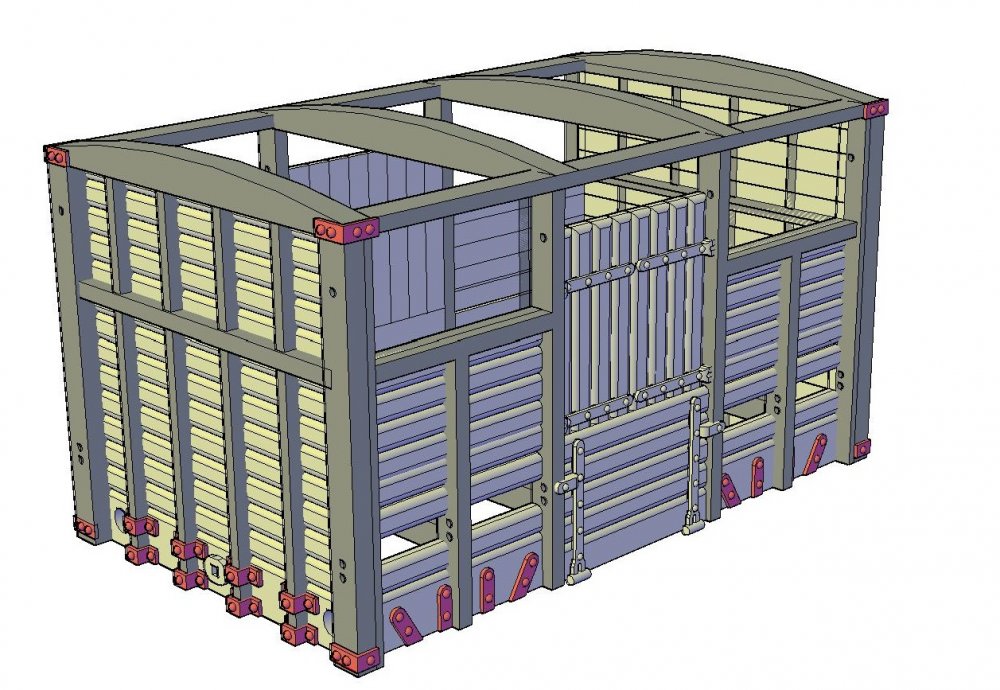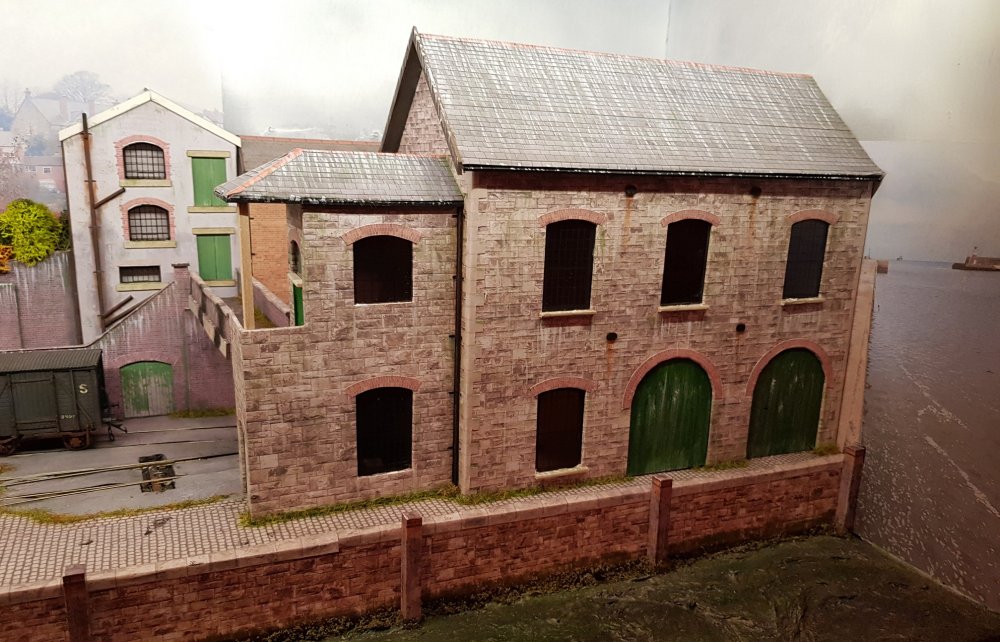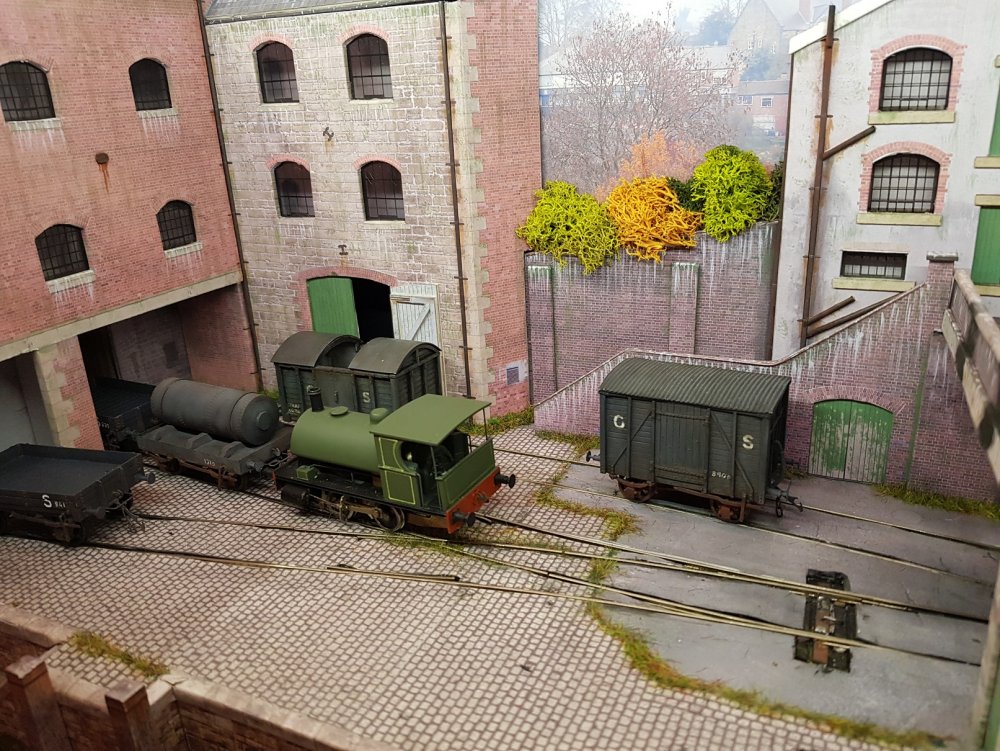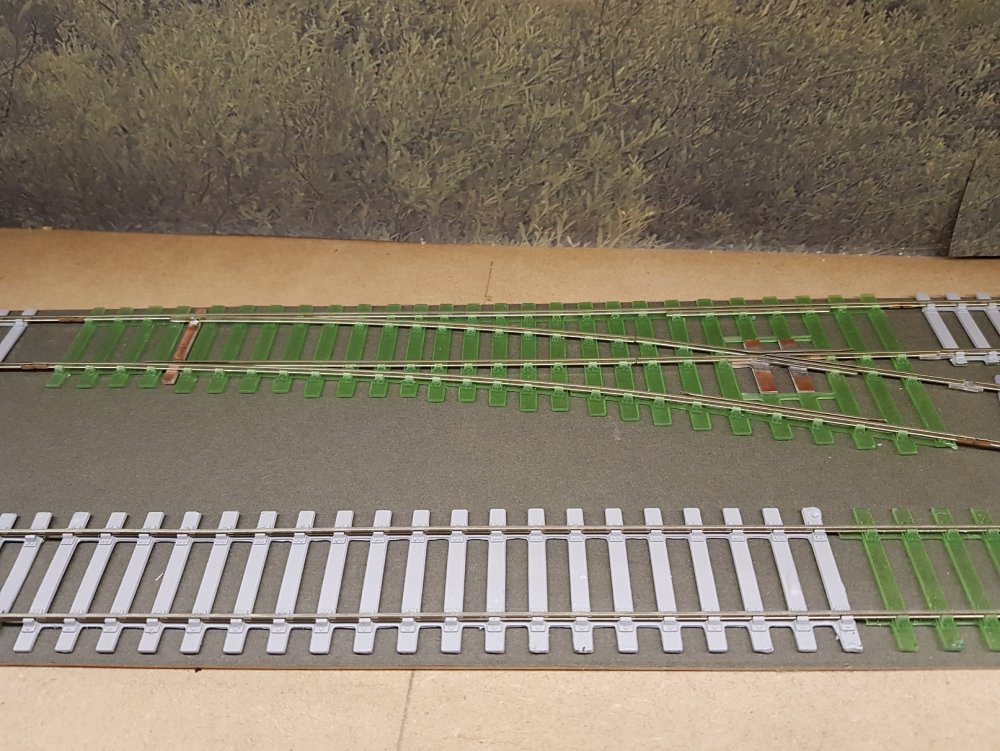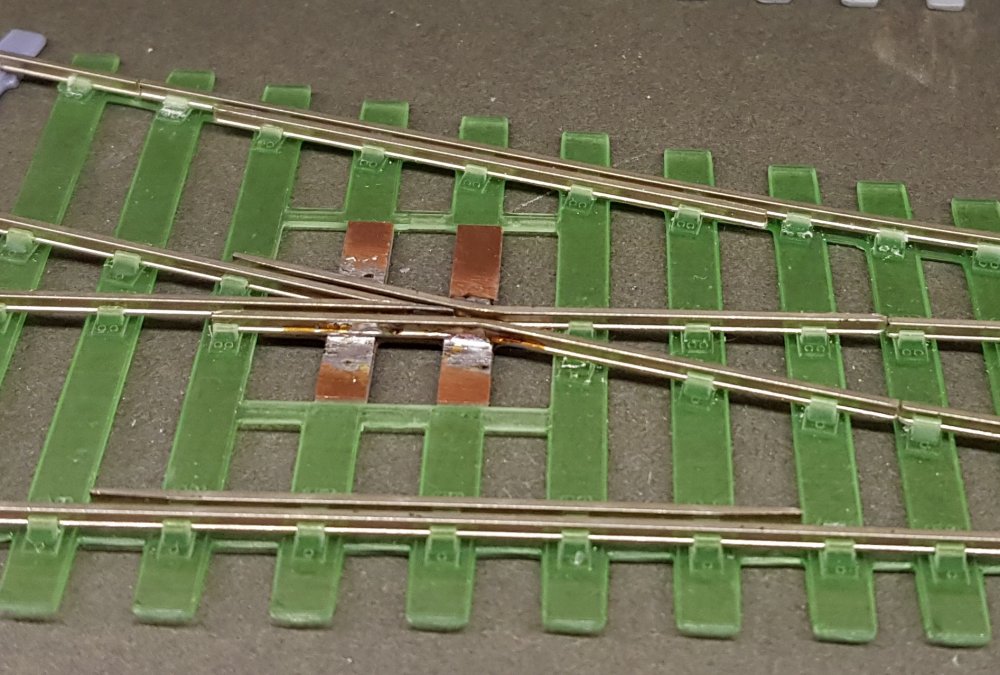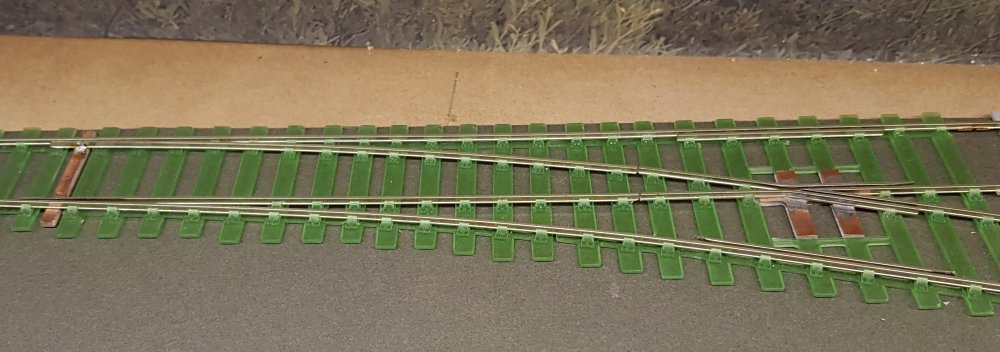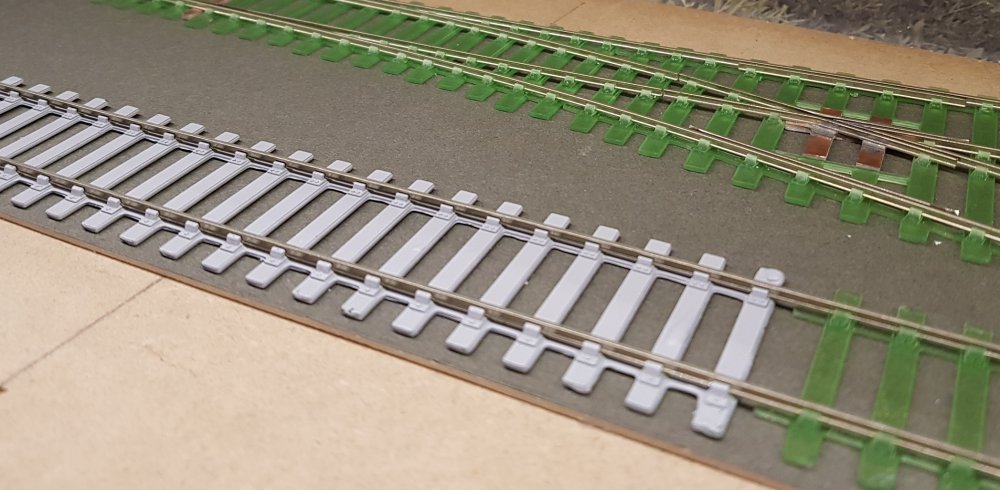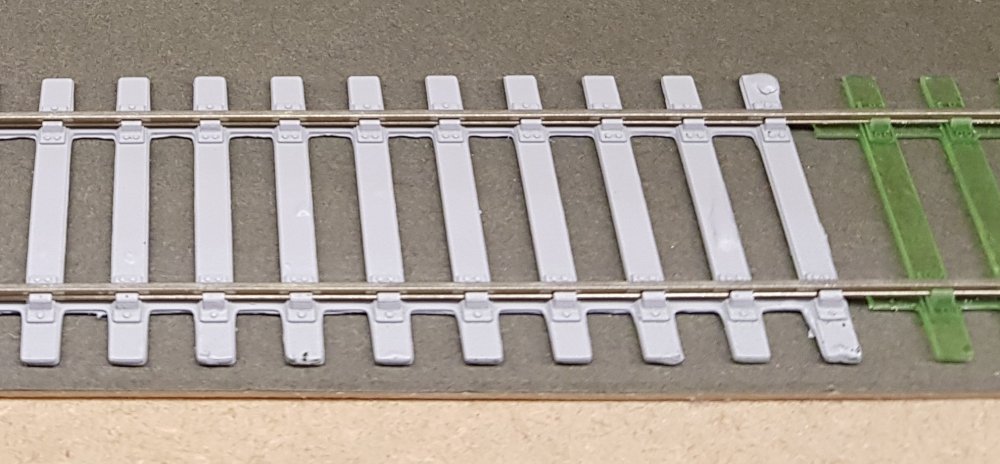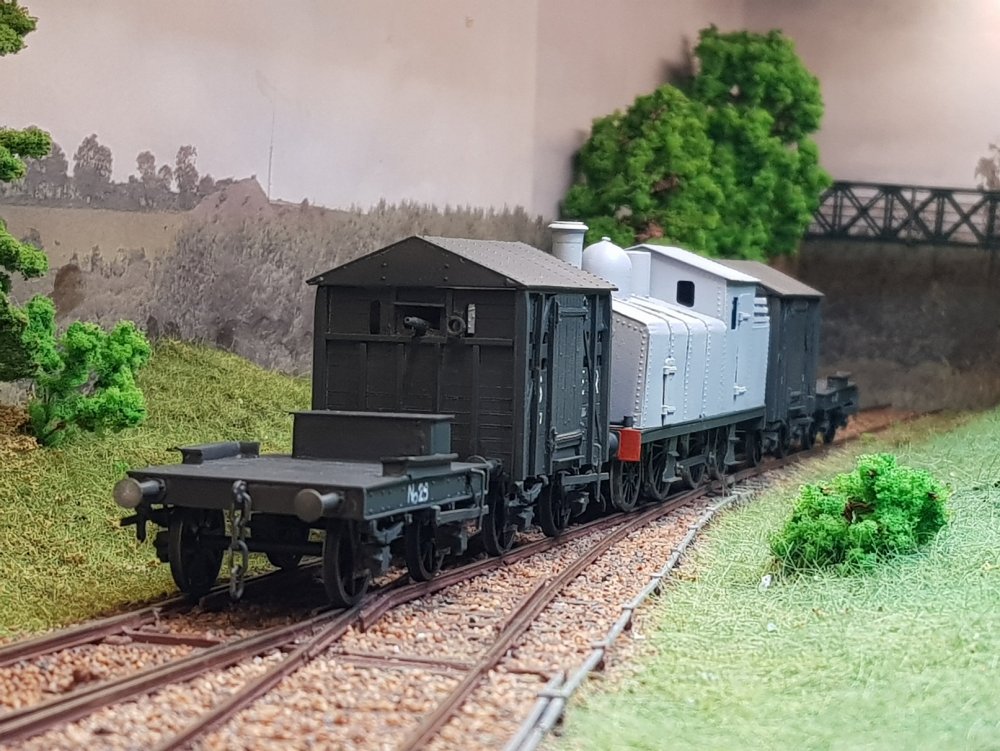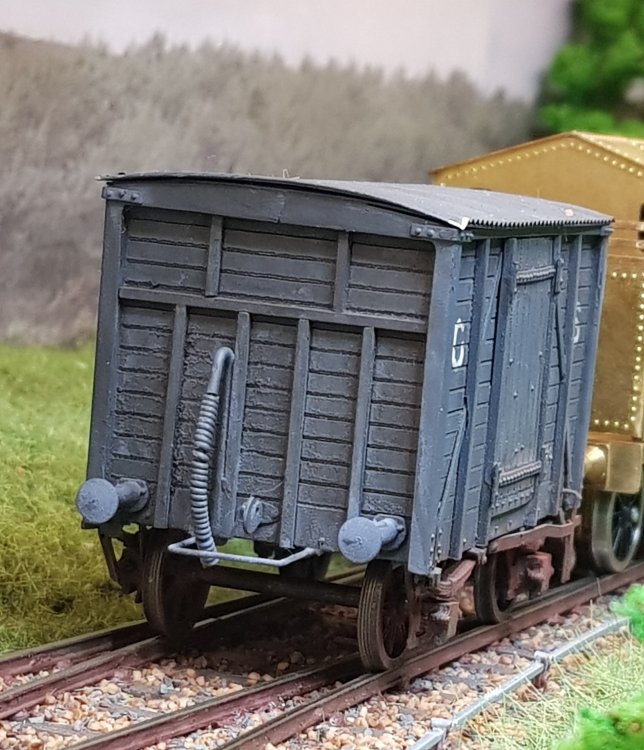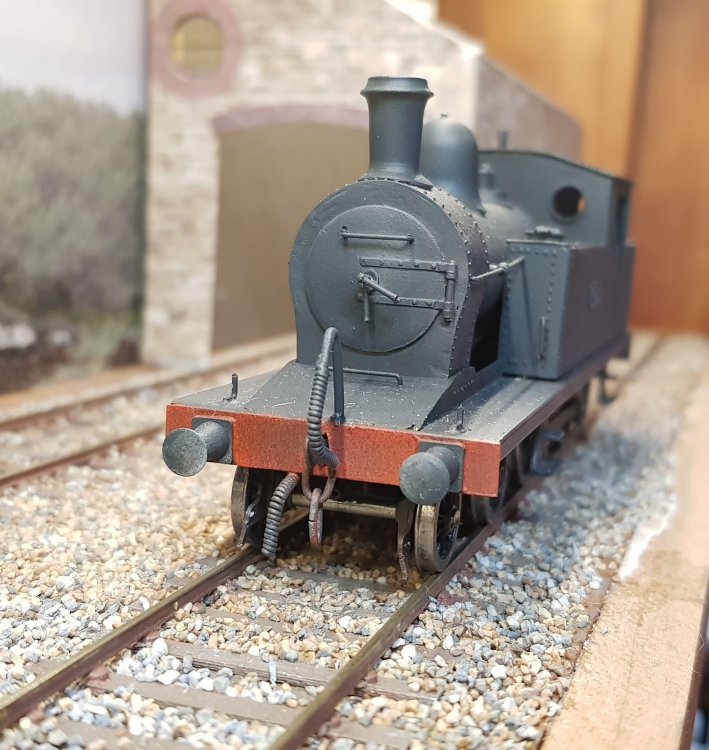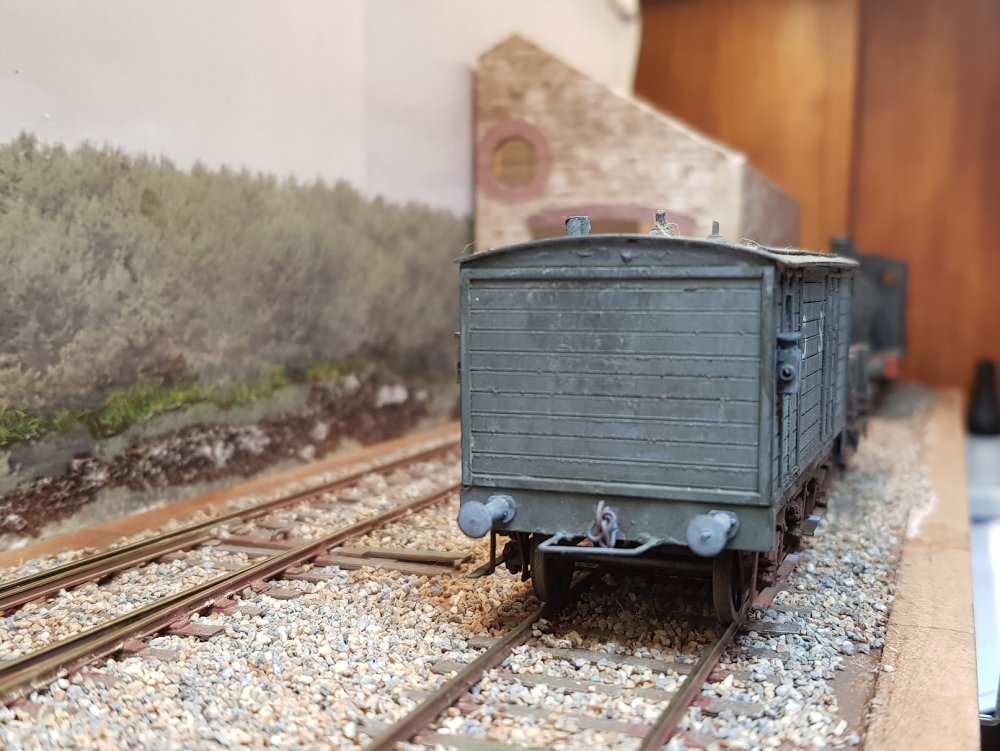-
Posts
540 -
Joined
-
Last visited
-
Days Won
29
Content Type
Profiles
Forums
Events
Gallery
Blogs
Store
Community Map
Everything posted by KMCE
-
Some minor tweaks to the 3D model to Rev 4 to include changes to the lower straps on the uprights to more prototypical detail. Also the holes for the bars were opened up to ease the installation of same. And the advantage of printers is the ability to gerenate a train quickly. I'm planning to use brass compensated chassis for these, so there is still some work to do, but not having to do all the uprights and rivet detail on the bodies is quite a relief. Will need to add weight to the wagons bring them up to the weight of the other wagons already made. Very pleased with the results & quality of the print.
- 379 replies
-
- 11
-

-

-
As many have noted herein, no heritage Irish train would be complete without the ubiquitous cattle wagons. I wanted to model the DSER version, alas there are very few images of these, however with a few photos and some calculations based on similar wagons, I managed to develop a suitable model. Rather than make these in brass & face the fiddly build of the uprights again & again, I looked at 3D printing them. The model progressed through various versions till we get this First model, bit to thin... Some developement through rev 2 - timber uprights were still a little thin and not enough definition on the planks..... Another revision, we get to a more presentable model: Holes included in the model did need some reaming out but make the installation of the bars easier. Some tidying up needed - more visible in the photos than on the model itself. Plan is to build a chassis in brass with some added weight to match the weight of the other wagons, but hopefully this should allow me build a rake much quicker. More as time permits.
- 379 replies
-
- 10
-

-

-
Lovely looking wagon, but then I'm kinda biased!! Key wagon to master in DSER modelling as it formed the basis of many other wagons. Nice one!!
-
Bloody shite-hawks - they get everywhere!!
-
Finally got around to doing some work on this layout. Many other projects, including 305mm scale have kept me busy. Got some paint onto the mineral wagons, which still need to be weathered. A little bit of gardening and weatering on the model has helped to tone it down & plant it in the secene. Still some more to do, but it's all part of the process. It should be on display in Bray on Sunday for those who can get about. Ken
- 71 replies
-
- 19
-

-

-
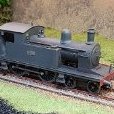
1/32 Scale Mountfleet Round Table Minesweeper
KMCE replied to Georgeconna's topic in Aviation & Maritime Modelling
The Waverly does get about. Some years ago she operated off the East Coast and was operating tours from Wicklow down towards Arklow. Very nice ship! -
Seriously impressive fiddle yard David. Great ideas & some eclectic collections not seen elsewhere. I agree with the sentiment regarding building yourself. The realisation you can build it if you can't buy it, really opens up the older eras of the hobby. Well done & keep up the good work.
-
Large Eire sign in Dalkey. One of many found around Ireland during the really dry spell back in 2018. Die back of vegetation due to drought highlighted these signs which date back to the "emergency". Their purpose was to provide a guide to flyers who may be "temporarily unaware of their location" particularly returning from atlantic escort duties, or to dissuade errant Luftwaffe bombing missions. Quite impressive from the air & clearly visible (on good days anyway!)
-

Classified: 7mm scale 36.75mm gauge Ivatt F6 2-4-2T
KMCE replied to Galteemore's topic in For Sale or Wanted
Lovely looking locomotive, that said, I do have a soft spot for the 2-4-2 tanks. Really like the checkrail details on the crossover - very realistic. -

Would you model in 21mm if RTR track and models were readily available?
KMCE replied to BosKonay's topic in Irish Models
Whilst not exactly RTR, with some 3D modelling (should read a lot of modelling) and 3D printing, it is possible to develop a basic 45' straight, and a B6 point. Developed to P4 standards with the 1:20 incline inwards using code 75 bullhead rail results in this: Points proved to be a tricker prospect. Ensuring gauge widening, check rails, crossng vee and closure rails was a little more difficult. Easy to print a continuous line through the vee, but more challenging to get the vee in place, soldered without damaging the sleepers below. The compromise was to print a space for coppercald, cut it on the mill and use as a base for soldering everything in place. The upside of this is I only need one dropper to wire the complete frog. Once the sleepers are painted and the whole lot ballasted, this should not really be visible. As a B6 point, it c. 260mm long, so is printed in two parts as my build plate is only 190mm - not an issue as you cannot really see the separate element once completed. The reason for B6 is that I have found that locos more than 4 coupled will not go (comfortably) through anything less. They do take up space, but have a very prototypical look. This process does make it a lot easier to make a point, however the basics of point construct still apply, it just considerably reduces the amount of soldering. As chairs are printed to the correct gauge, jigs are not needed - just push in the rail as necessary. Still a work in progress as there the gauge widening on the diverging track exit is slightly tight - a minor tweak (I hope!!) to the CAD model should solve this problem. The track shown above is part of a test layout to see how well this process works and will be developed further in the layout section. More as time permits. Ken- 272 replies
-
- 19
-

-

-

-
The court of public opinion need not adjucate on the merits of a project so well executed with a quality thus demonstrated. A tour de force, methinks! The reality of the particular era these coaches were extant is recored in grainy and poor quality phoots with only text desrciptoins of what they may have looked like. To see a modern rendition of these, to me, breathes live into the past. They look fantastic, well done.
-

Bing Live Steam Loco Gauge O - Repair & Restoration
KMCE replied to murrayec's topic in ECM Model Trains
Stunning. Detail is superb. Well done.- 24 replies
-
- 1
-

-
- bing live steam
- bing gauge o
-
(and 1 more)
Tagged with:
-
I really like that chassis solution. Very clever in its execution - it should allow quite tight curves to be negotiated. I might borrow that idea for some 6 wheelers in the future. Lovely work as always. Ken
-
Fantastic looking loco, David. Detailing is one of those elements that seems to take as long as the building itself. Well done.
-
Correct - scaling is a very simple matter in AutoCad. Generating a file for printing would take slightly longer. Printhing time would be longer, but not excessively when compared with scratchbuilding. As per my workbench post, I commissioned an etch for the DWWR ballast wagons which cost for photo etch, metal (330 x 230mm), and shipping c. € 75 (4 wagons). A reprint of the same etch was € 27. So 8 wagons cost € 102. Add to that wheels, axle boxes, springs, and buffers to complete. Still not a bad price €12.75 per wagon etch? Ken
-
I stand corrected....... I appear not to know what I'm talking about. I'll get my coat.
-
It's very hard to see how rail freight could ever make a comeback in Ireland. The country is just too small & most goods are palletilsed and loaded / unloaded into containters or trailers at the manufacturers. It makes no sense then to drive that trailer / container to the nearest train station, wait to have it offloaded (including paperwork), load onto the train, wait for the scheduled departure & then reverse the process at the other end. It would take days, and when quite a lot of freight is moved on a "just in time" basis, waiting around for you local train just won't make the grade. Load at one point, deliver to the other without middlemen is both quicker & cheaper. As our gauge does not match European gauge, our rolling stock must stay in Ireland, so if traffic was put onto rail, for transport to Europe, it would have to be unloaded at Rosslare or Dublin for moving onto the ferry. Once again multiple handling. What could possibly have some chance would be a drive on scenario similar to the Channel tunnel, if loading gauge can be worked out, and there was sufficient frequency to make sense. Then our truck driver stays with his consignment, but cuts out considerable driving time. Alas, it's hard to see our freinds in IE agreeing to something like that. As long as we all want to pay the absolute minimum for everything we consume, the cheapest solution at present is our trusty HGV. All is not lost however, for those pointing to the carbon emissions, as there is a growing development of Bio Natural Gas suitable for compression and use in road vehicles. The market is specifically targeting both the main grid and the road freight operators; there are already quite a few CNG power HGVs on the road already.
-
Murph, This site may be of use - http://www.norgrove.me.uk/points.html for building points. I know it's rivet & ply, but the track work would be similar. I found this very useful and a good tutorial. The area that took me some time to finalise was the stretcher holding the blades & tension necessary to keep the blade against the rail. I ended up using this technique which is simple to do and works quite well. https://www.youtube.com/watch?v=uXGEjuDhwhY&t=1s Hope this helps. Ken
-
Thankfully they have done so to date!!! You know how it can be.....
-
Dave, PM sent Ken
-
Wow, that sounds like my job every day!!!!
-
That is a fine looking model and print quality is very good. Can you advise what printer you are using. I have used Shapeways in the past to print, but also to buy models designed by others and found the quality poor to shocking. Ken
-

GSR & CIE locomotive list for grey, green or black livery
KMCE replied to jhb171achill's question in Questions & Answers
If it is a wagon plate it is most likely from a 12 Ton Open wagon, built in 1904 by Grand Canal St. Works. Ken -

Would you model in 21mm if RTR track and models were readily available?
KMCE replied to BosKonay's topic in Irish Models
Perhaps, these may help? 458 Class DSER 13'6" Covered Wagon Armoured Train DSER Goods Brake Latest to the Yard - DW&WR Ballast Wagon Happy New Year to you all.- 272 replies
-
- 14
-

-

.png.c363cdf5c3fb7955cd92a55eb6dbbae0.png)

